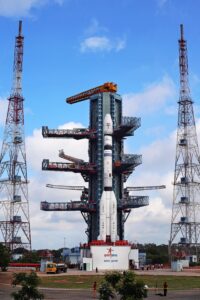Astronomy – Have you ever looked up at the sky at night to observe the moon and stars or ever saw photos of planets, galaxies, nebulae in movies, or on the internet and wondered what they are? Let’s explore one of the oldest natural science – Astronomy together!
The scientific study of the celestial objects, space, and the physical universe as a whole is known as Astronomy. For example, stars, planets, nebulae, asteroids, galaxies, black holes, and other celestial bodies. Nowadays, professional astronomy is often considered to be identical to astrophysics.

Astronomers are looking for new planets, trying to map the entire sky, or trying to understand the structure of the universe. Some astronomers focus their research on space junk that could disrupt Earth’s satellites, while others study distant stars, galaxies, and black holes. Some astronomers study the stars, planets, and asteroids in our solar system, such as the moons of Jupiter and Saturn, or Sun, and some monitor our galaxy Milky Way and other galaxies, as well as other objects outside our galaxy, such as the neutron star. Astronomers are studying space debris that could disrupt satellite operations or damage satellites.
While astronomy is based on the exploration of space in general, astrophysics tries to explain the processes that make the universe what it is. The more we know, the more people study and study the known objects in detail, and this gives us a better understanding of the nature of our universe and its origins.

Professional and amateur astronomers observe our universe and develop theories and applications that help us understand our planets, stars, galaxies, etc. This allows us to collect information about the formation and evolution of stars and galaxies and their evolution into planets and stars.
The main work is done in laboratories and observatories, but professional scientists involved in this study use spacecraft and satellites to further study the universe.
There are two main fields of astronomy:
Observational Astronomy uses telescopes and cameras to observe stars, galaxies, and other astronomical objects, while theoretical astronomy uses mathematical and computer models to explain observations and predictions.
Theoretical Astronomy, however, is supposed to be the study of computer analytical models used to study several phenomena involving celestial objects, such as the formation of stars, galaxies, planets, and the evolution of galaxies and stars.

Astronomy can further be classified into sub-fields according to the objects that astronomers study :-
Planetary Astronomy
In this sub-field researchers study planets(within and outside our solar system) and objects like asteroids and comets as well as. The scientists who are interested in studying it are called Planetary Scientists.
Solar Astronomy
In this sub-field, researchers analyze and study the Sun. Scientists try to understand how these changes affect the Earth. The scientists who are interested in studying it are called Solar Physicists. Space-based and ground-based instruments are used to study our star.
Stellar Astronomy
The researchers study the creation, evolution, and deaths of stars.
Galactic Astronomy
The researchers study our Milky Way Galaxy. Astronomers study the motion and evolution of the Milky Way in order to learn how galaxies are formed.
Extragalactic Astronomy
Researchers study other galaxies in the universe outside the Milky Way to establish a pattern to determine how galaxies are formed and evolved over time.
Cosmology
The study of the universe in order to understand its origin, evolution, and structure. Cosmologists try to understand the birth and origin of the universe from the Big Bang to the present.
* The information provided herein is, to the best of our knowledge and is only for informative purpose. If you have a news update or correction, let us know at -info@garudauniverse.com




